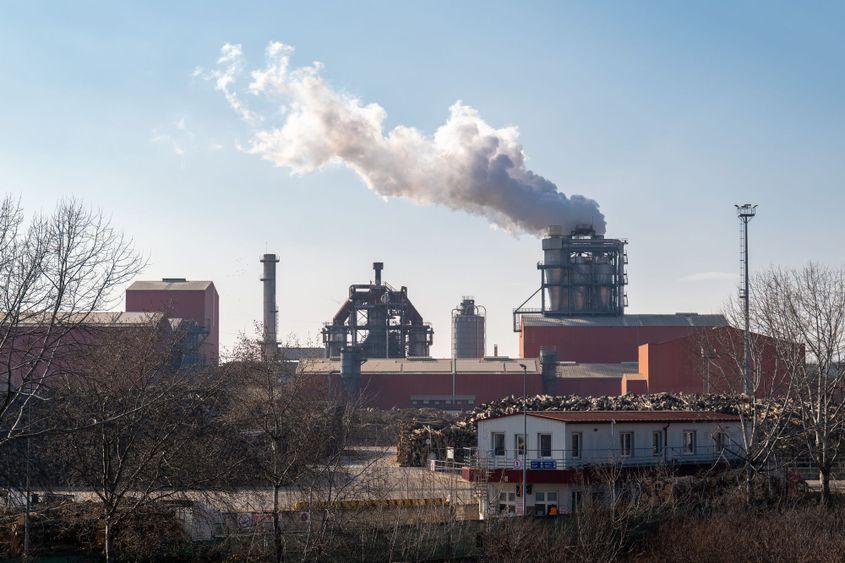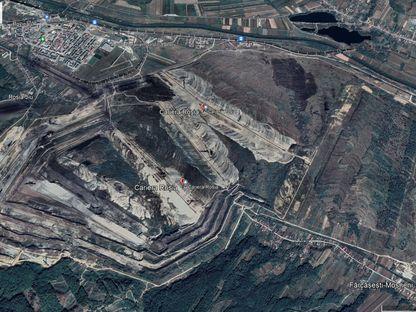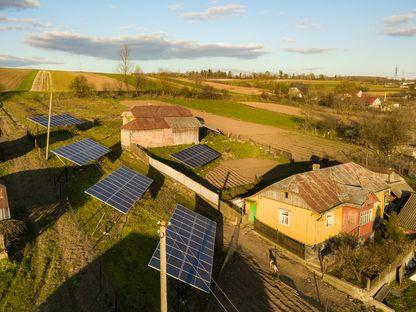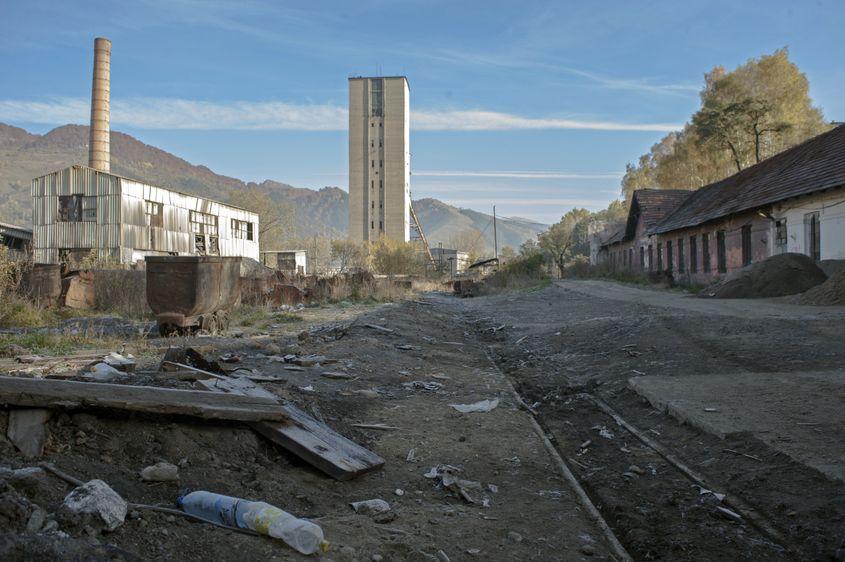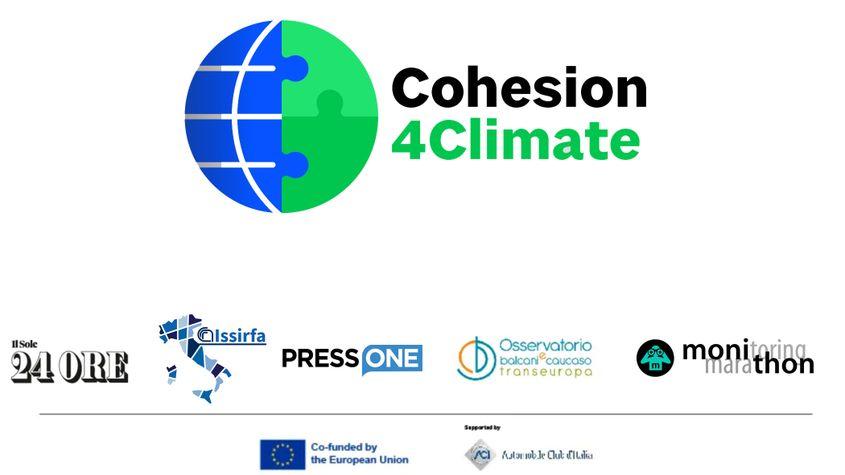
Combinatul Azomureș Photo: azomures.com
13/08/2025
”We don't know exactly what has been funded.” The Romanian state, a dismal failure in attracting EU funds for the most polluted counties
Romania has access to €2.13 billion in non-reimbursable European Union funds through the Just Transition Program (2021–2027) to help green six counties. 500 submitted projects are awaiting funding. However, the money has been blocked for more than three years.
- The Just Transition Fund is intended for projects that support a fair transition toward climate neutrality, especially in counties most vulnerable to the green transition: Gorj, Hunedoara, Dolj, Galați, Prahova, and Mureș, where some of the country’s largest industrial polluters operate.
- Nearly three years after the program was approved, Romania has not accessed these funds. The program is blocked, warns Eliza Barnea, a Bankwatch expert and member of the Monitoring Committee overseeing implementation.
- Among the Just Transition Program’s priorities are: job creation, professional retraining, attracting green investments, reducing the carbon footprint, and mitigating the social and economic impact of the transition to climate neutrality.
- Of the 16 promised calls for funding, the Ministry of Investments and European Projects has only launched and closed one — aimed at SMEs.
- Authorities lack transparency about where the money is going, making it impossible to quantify what is being funded or what the real-world results will be, warns expert Eliza Barnea, a member of the Monitoring Committee, which is part of the program’s decision-making structure.
- Barnea told PressOne that, in the absence of an integrated vision for the program, the social and economic effects in these regions could destabilize them.
PressOne: What do you think about the projects selected for funding through the Just Transition Program? Do they seem to fulfill the program’s purpose?
Eliza Barnea: Unfortunately, there isn’t enough transparency regarding what the destination of these funds actually is. I’m also a member of the program’s Monitoring Committee, and as the process advances, the Ministry of Investments and European Projects is supposed to publish on its website a list of the projects that are moving forward to contracting — meaning they’ve passed all of the checkup stages.
Unfortunately, that list isn’t detailed enough to allow a transparent analysis of how the funds are being used. You might see the project number, the company name, the amount to be or already contracted, but in the description of the activity, you often see something vague like „production diversification.” But „production diversification” tells you nothing. So in quantitative terms, I couldn’t tell you whether 20% is going toward decarbonizing production, or 30% toward some other goal. Aside from what we know from working on the ground, there’s no clear or transparent analysis of the overall situation.
So right now, is it possible to estimate, for example, to what extent we’ll be seeing green energy implemented by 2027?
No. SMEs were the only call we’ve had so far, and they had the option to invest in renewable energy sources. But again, in this situation, we don’t know to what extent they actually did that. According to the program, more calls are supposed to be launched for renewable energy and sustainable mobility, but unfortunately, those still haven’t opened. The entire program is severely delayed.
There was even a letter from the European Commission, following an audit of the Just Transition Program, which highlighted the risk of fund disengagement, because by the end of June, only 2.64% of the allocation had actually been paid out to beneficiaries.
These payments came from the pre-financing provided by the Commission at the start of the program to help launch it. Later, expenditures must be certified and reimbursed by the Commission. After using this pre-financing, actual absorption begins; and for actual absorption, we’re at 0%, meaning no reimbursements have been requested from the Commission.
In this context, how can authorities have a clear picture of where the money is going or whether projects meet carbon emissions criteria, for example?
Mulți ne citesc, puțini ne susțin. Fără ajutorul tău, nu putem continua să scriem astfel de articole. Cu doar 5 euro pe lună ne poți ajuta mai mult decât crezi și poți face diferența chiar acum!
Project implementation is monitored by the relevant authorities. That is, the Regional Development Agencies and the Ministry of Investments and European Projects through the Managing Authority.What I was referring to is that we, as civil society, and especially as members of the Monitoring Committee, which theoretically is part of the decision-making structure for the program’s implementation, do not have that perspective.
After each application goes through the verification process, the outcome is not transparent. For example, which SME is going to invest in what, how many jobs will be created, under what conditions — all of this is information that, unfortunately, we do not have.
Regarding the lack of transparency you mentioned, are there any suspicions so far that some projects, instead of reducing the carbon footprint, might actually increase it?
It’s the same problem, we simply can’t know. In fact, we know there are safeguards in the program and in the regulations stating that funds cannot go to major polluting sectors. They cannot go toward arms production, tobacco, anything related to oil, gas, logging, things like that.But as for exactly where the money has gone, I couldn't tell you.
Coal Mining Expansion Leads to Deforestation: Over 470 Hectares of Forest Cut Down in Gorj, Romania
Over the past six years, more than 470 hectares of national forest land have been allocated by the government, without compensation, to the Oltenia Energy Complex (CEO) for the expansion or opening of new coal mines.
The not-so-green Romania. The state delays settlements for photovoltaic panels by 2 years
PressOne reviews the main dysfunctions in the production, consumption and distribution of energy from renewable sources, as revealed by discussions with consumers and data provided by official sources at the request of our editorial office.
But the concerns lie more in another area. There were additional points in the guidelines for hiring people directly affected by the transition — those who worked in the coal industry — and are to be employed by the SMEs that create jobs through the Just Transition Fund (JTF).However, for example, on the ground, it currently seems that there are difficulties in finding people willing to return to the labor market, or to leave this industry at this time. So, although a commitment was made in the application, it appears that they are now struggling to fulfill that commitment.
What have been the main obstacles that delayed the funding of projects under the Just Transition and the actual start of their implementation?
I think there are several. First of all, there were changes in leadership at the Ministry, which were extremely poor. Communication was very weak, and transparency as well.
Un newsletter pentru cititori curioși și inteligenți.
Sunt curios
Then, there is still very little understanding at the local level of what the benefits of the green transition and green economy really mean. For example, if we talk about mining regions, in the Jiu Valley, they have done only one thing for 100-150 years, and the entire economy was built around the value chains of that industry.And now we're asking: OK, let's shut that down, and in seven years, let's develop future-oriented alternatives, while also working on the environment, the economy, the social fabric, and learning how to absorb European funds — because that’s actually what makes this program different.
It's the first time counties like these have received a dedicated allocation. And if we look at things historically and traditionally, these counties are at the bottom in terms of absorbing European funds when competing with other counties in their regions. Any kind of economic transition in these regions is a generational process. And yes, I would say we are only just at the beginning.Unfortunately, in the proposal for the next EU budget, the Just Transition Fund is no longer included. And because of that, I believe it's even more urgent to take advantage of the opportunities we have now.
If we fail to capitalize on these opportunities, we risk seeing the same patterns we witnessed during the deindustrialization of the 1990s: chaotic, overnight closures with disastrous social and economic consequences: increased vulnerability to extremist rhetoric, depopulation, and all the related problems.
So from that point of view, considering we've been planning the just transition for six years now, we should be able to do it in a more orderly and fair way.
You mentioned that on the ground, things look different from how the projects appear on paper. What did you mean by that?
We mainly work in Gorj County and Hunedoara County, especially in the Jiu Valley. In the Jiu Valley, they have a structure called ITI (Integrated Territorial Investments) — the same model that was used in the Danube Delta and is now being applied in Făgăraș. They’ve created an organization called ADTI Valea Jiului (Integrated Territorial Development Association Jiu Valley), which tries to look holistically at all non-reimbursable funding opportunities and to develop structural or transformational projects.
There are several strategic projects aimed at green mobility in all six towns of the Jiu Valley. There’s a plan to create a robotics hub in the Jiu Valley because local robotics teams have won numerous national and international awards, and the goal is to build on that potential.There is currently a project to build a factory that manufactures robots for cleaning photovoltaic panels, some solar panel and energy efficiency projects, and a major industrial heritage project at the Petrila Mine.
Basically, the attempt is to cover different areas so as to lift the region in an integrated way. You look at the social side, access to infrastructure, what remains from the industrial past in terms of infrastructure, and obviously at the economy and the local business landscape as well.
I can’t say, for example, whether in Prahova or Mureș there’s this logic of strategic projects — nothing I’ve heard of so far. In Gorj, which is the most affected region in Romania by this process and also the largest beneficiary of the Just Transition Fund, there are some discussions with the towns Rovinari and Turceni about exploiting the geothermal potential in these towns for sustainable heating.
And there are discussions among more open-minded municipalities that better understand the current opportunity to develop projects — including in renewable energy, because the energy infrastructure is very good there. There is a willingness, but unfortunately, support is needed from the central level. There still isn't a visionary leader who truly understands what’s at stake and is ready to grab the bull by the horns. We’ll see what can still be saved with the time we have left.
How is the Just Transition Program affected by Romania’s political instability, concretely?
It has been simply blocked. I mean, think about it — out of 16 funding calls, only one has been opened and closed. That one had the largest allocation in the entire program, 53%. But the rest? We’re talking about funding calls for mobility, for retraining the workforce that will be directly or indirectly affected by restructuring. We’re talking about cleaning up polluted sites, because many of these communities have major environmental issues, like lack of clean water or air pollution, and about facilitating access to renewable energy sources.
So there are many dimensions that need to be thought through in an integrated way when you're trying to ensure the fairness of the transition. Unfortunately, so far, we’ve only managed to open and close one call, and we don’t even know exactly what was funded.
I understand that the Jiu Valley is an example of best practices. What’s preventing other counties from replicating the integrated development model proposed by the Jiu Valley?
Administrative capacity. I think there’s a tendency to wait for instructions from the top, and since those instructions never came, activity has stalled at the local level too.
In addition, there's also the issue of understanding the opportunities of the green economy. There are many forums, for example international ones — like the Just Transition Platform Conference, which organizes events and exchanges between regions — and Romania is very rarely represented. So the exchange of knowledge between what others are doing and what we are doing struggles to reach our local areas.
And since there isn’t much support from outside these counties, whether in terms of expertise or attracting more complex investments to these territories, local actors find it very hard to imagine transformational projects that could realistically serve as alternatives to the industries they’ve depended on for decades.
How are communities affected by these delays?
People have been hearing about the Just Transition Fund for 6–7 years, but they still haven’t seen a viable alternative on the ground. And in the meantime, for example, in Gorj, there have just been mass layoffs at a car parts factory, and over 400 people are expected to be laid off.
The reasons aren’t clear, but the restructuring of the auto industry is claimed to be the result of the shift to electric vehicles. So it’s clear the impact is real and the transition is happening now. But even though people were consulted and their input was requested, they haven’t been given a real alternative — no new decent jobs created in a clean economy.And with austerity measures likely to increase the cost of living, the problem is only going to get more severe.
How should the transition to renewable energy be carried out in these counties?
The first step, without a doubt, is to make these processes transparent.
Then, I think there needs to be an improvement in inter-institutional collaboration and communication, so we can create synergies between the existing plans and funding opportunities.
If we know we’ve committed to an industrial investment through the National Recovery and Resilience Plan (PNRR), how can we also leverage that investment to meet the needs of these counties? Because €2.5 million is a lot of money, especially when directly infused into local areas, but it’s not enough to meet all the local needs.
In addition to that, we need accountability. There are still voices in the political and public space calling for the postponement of coal plant closures. As long as mixed messages are being sent to the regions — today you're told they’ll close, tomorrow they won’t — it's very hard to expect vision and engagement from local actors.Again, there are many opportunities, and a lot of know-how, including in the area of geothermal resources.
Is Romania at risk of missing this opportunity and remaining both a source of increased carbon emissions due to the specific nature of its regions, and a country that failed to achieve professional reconversion in these areas?
It could definitely be that we are in the process of missing this train, because the transition is happening, whether we like it or not.If we look, for example, at new energy production capacities globally, we see that in 2023, 82% of total global investments in new capacity went to renewable energy. So if you look at where the money is going — and weigh that against the costs of fossil fuel production, state subsidies on carbon emissions certificates, and so on — it’s clear that the transition is underway.We see in the draft proposal for the next EU budget that there’s a massive fund for competitiveness, with a strong emphasis on net-zero technologies and clean technologies.
These regions are historically male-dominated industrial zones, which is why female labor force participation in these counties is around 50%. Because traditionally, where the labor market looked like that, men went to work and women stayed home. But we can no longer afford for 50% of women to remain out of the workforce. So we must leverage this labor force, provide access to programs that equip them with skills and competencies relevant to the future economy.
We also need to take advantage of the existing industrial infrastructure, and the solar, wind, and geothermal energy potential in these counties.
There are a series of advantages that could contribute to the competitiveness of reindustrialization, and could be integrated into the European value chains that are now being developed.But at the moment, I don’t see a sustained and visionary effort to make that happen.
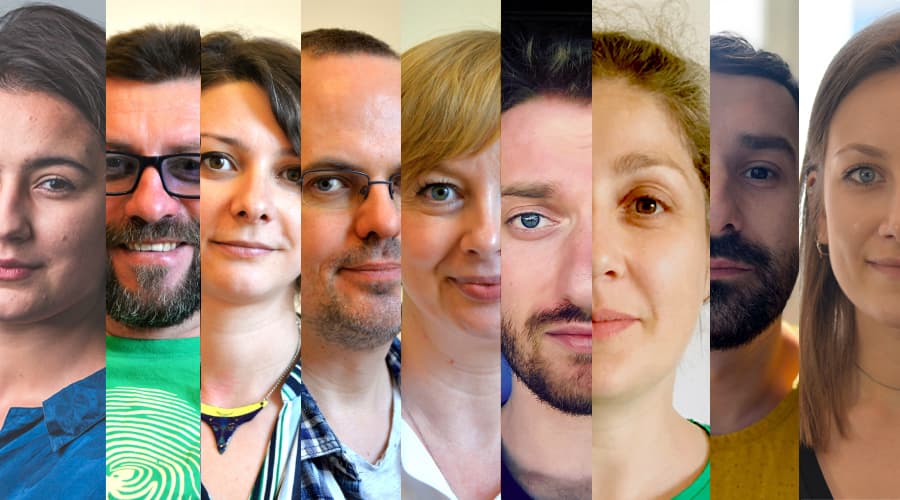
Avem nevoie de ajutorul tău!
Mulți ne citesc, puțini ne susțin. Asta e realitatea. Dar jurnalismul independent și de serviciu public nu se face cu aer, nici cu încurajări, și mai ales nici cu bani de la partide, politicieni sau industriile care creează dependență. Se face, în primul rând, cu bani de la cititori, adică de cei care sunt informați corect, cu mari eforturi, de puținii jurnaliști corecți care au mai rămas în România.
De aceea, este vital pentru noi să fim susținuți de cititorii noștri.
Dacă ne susții cu o sumă mică pe lună sau prin redirecționarea a 3.5% din impozitul tău pe venit, noi vom putea să-ți oferim în continuare jurnalism independent, onest, care merge în profunzime, să ne continuăm lupta contra corupției, plagiatelor, dezinformării, poluării, să facem reportaje imersive despre România reală și să scriem despre oamenii care o transformă în bine. Să dăm zgomotul la o parte și să-ți arătăm ce merită cu adevărat știut din ce se întâmplă în jur.
Ne poți ajuta chiar acum. Orice sumă contează, dar faptul că devii și rămâi abonat PressOne face toată diferența. Poți folosi direct caseta de mai jos sau accesa pagina Susține pentru alte modalități în care ne poți sprijini.
Vrei să ne ajuți? Orice sumă contează.
Share this


